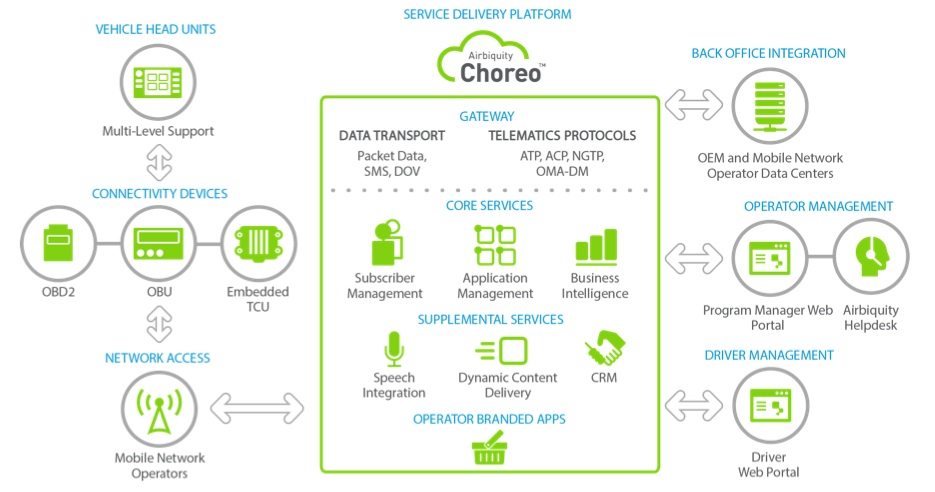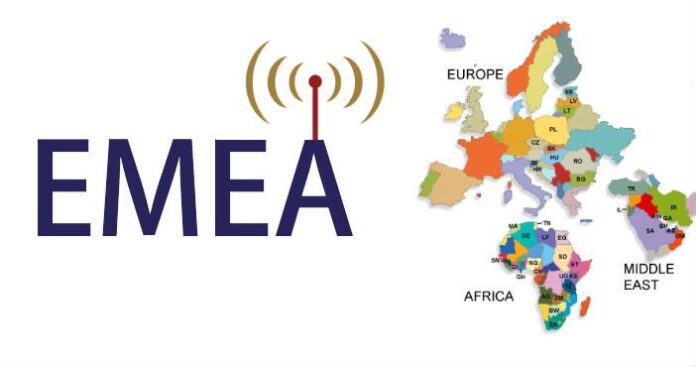Last week I had the opportunity to spend some time with Airbiquity at Telematics Munich to better understand its connected user experience. Not just a car or a connected car, but a connected user. Their vision is that information is provided across devices, the integration of the smartphone and the car, and cloud technology is a mandate to enable this sharing. Sounds simple, but there’s a great deal of technology behind the scenes to bring this vision to life.
As connected car functionality becomes not only a differentiator, but a table stake for automotive OEMs, the end-to-end challenges of providing these services needs to be addressed. Vendors such as Airbiquity must work with OEM vendors to develop new solutions based on geography, brand of vehicle, model of vehicle, etc. In order to be able to leverage the basic set of functions over and over, without starting from scratch with each new model, a service-delivery platform concept is required. Having spent my career in the telecom industry, this is another example as to how the connected car must leverage learnings from products which enable telecom operators to offer differentiated solutions and customer experiences by utilizing a cloud-based platform to provide speed to market and customization.
Airbiquity offers such a service-delivery platform with their Choreo product set. The gateway function supports multiple data transport options such as packet data, SMS and data-over-voice (DOV). Also supported within this function are many telematics protocols such as advanced telematics platform (ATP), application communication protocol (ACP), next generation telematics protocol (NGTP), and OMA device management (OMA-DM). Core management and operations functionality supports subscriber management, application management, speech integration, customer resource management (CRM), content delivery and business intelligence.
There are three key areas of focus for the end-user experience – driver assistance, driver efficiency and driver experience. Within the driver assistance solutions, features that are supported include rapid response emergency assistance, remote car management to unlock/lock your vehicle via your smartphone, proactive vehicle monitoring in the case of a stolen vehicle and the provisioning of geo-fencing with alerts if the vehicle leaves a specific quadrant.
Plugging into the connected car
Driver efficiency is aimed at electric vehicles. Things like battery charging status, driving range and planning your trip around charging station locations. Personal anecdote on this topic. I’ve been offered an electric vehicle as part of the car sharing service I use in the city where I live and am not comfortable with using an electric vehicle. Not because I’m against electric vehicles, but after so many years of driving a traditional automobile I don’t know how to think “electric.” What does 50% capacity mean? How long/far can I drive? What about parking and charging – where are there charging stations, are they in use, how long does it take to charge? A smartphone app would alleviate all of these concerns. To me this is a great idea.
Driver experience is about a seamless hand off between your smartphone and vehicle, the ability to personalize your content, and to utilize this functionality in a safe fashion while in motion.
https://www.youtube.com/watch?v=Bgop8UOicZ8&feature=youtu.be&list=UUoIK9xUElMjzmoYLTTuXgkQ
Vendors in the telecom space should look to companies like Airbiquity to consider new market opportunities for the future based on in-house existing service delivery platforms. Of course they need to learn the automotive industry and that’s not an easy leap. But for today’s requirements Airbiquity has a leading set of offers and the telecom vendors have a lot of catching up to do.

